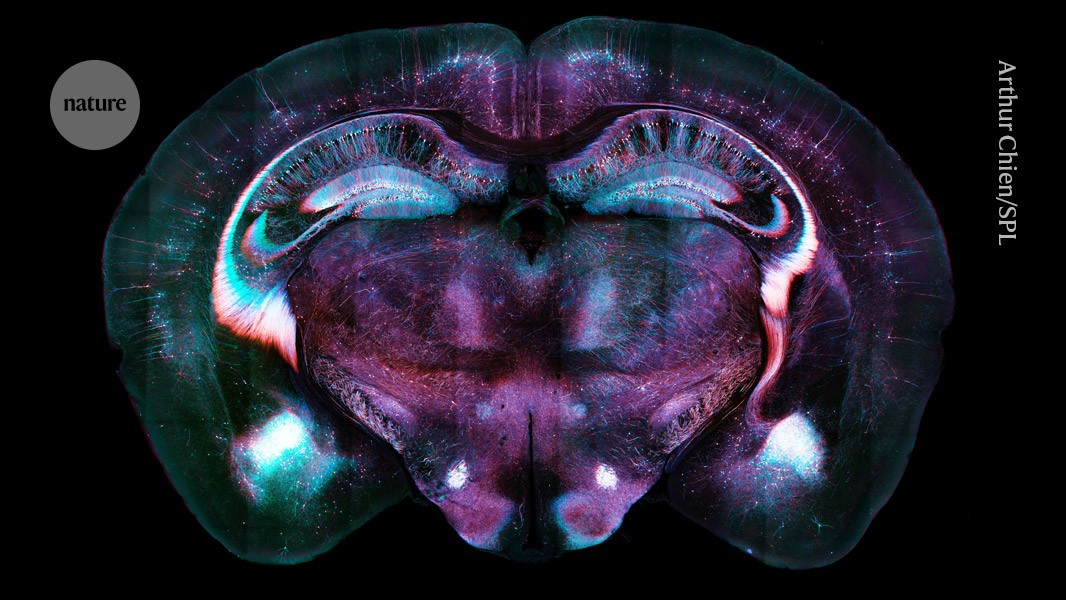‘Fear extinction’ signal in mouse brain offers clues about how to treat PTSD

Mechanism involving neurons that stimulate fear, and ones that suppress it, could help to explain conditions such as post-traumatic stress disorder

A section through a mouse brain showing neuronal cells labelled with fluorescent proteins.Credit: Arthur Chien/Science Photo Library
Neuroscientists have identified a brain signal in mice that kick-starts the process of overwriting fearful memories once danger is passed — a process known as fear extinction.
The research is at an early stage, but could aid the development of drugs to treat conditions, such as post-traumatic stress disorder (PTSD), that are linked to distressing past experiences.
In a study published on 28 April in the Proceedings of the National Academy of Sciences1, the researchers focused on two populations of neurons in a part of the brain called the basolateral amygdala (BLA). These two types of neuron have contrasting effects: one stimulates and the other suppresses fear responses, says co-author Michele Pignatelli, a neuroscientist at Massachusetts Institute of Technology in Cambridge.
Until now, scientists didn’t know what activated these neurons during fear extinction, although previous research implicated the neurotransmitter dopamine, released by a specific group of neurons in another part of the brain called the ventral tegmental area (VTA).
Enjoying our latest content?
Login or create an account to continue
- Access the most recent journalism from Nature's award-winning team
- Explore the latest features & opinion covering groundbreaking research
or
Sign in or create an accountdoi: https://doi.org/10.1038/d41586-025-01331-5
This story originally appeared on: Nature - Author:RJ Mackenzie














